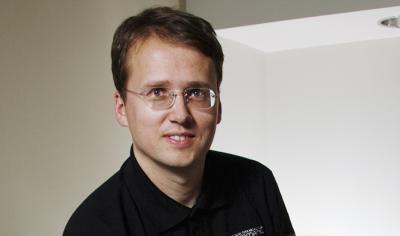In the 2012 election campaign, Mitt Romney was vilified for saying something everyone knew to be true and extrapolating motivation from it - that each party was going to get 47 percent of the vote no matter what and that dictated economic policy. Only 3 percent of the people on each side were really up for grabs, everyone else was voting for a ticket no matter who was on it.
That's very true. Absent a strong third-party candidate, such as the election of 1992, elections stay within a general range. In the 2012 election, both parties made a pretense of appealing to small business and minorities, for example, but there wasn't a lot of real effort put into those because it was well-known how those people were voting. Instead, candidates appealed to swing voters. A new paper says that polarization on cultural issues, like tolerance for gay marriage or spying by the administration, even affects competing candidates' economic platforms. In their paper, co-authors Stefan Krasa and Mattias Polborn of
the University of Illinois at Urbana-Champaign
develop a hypothesis of candidate competition that they say accounts for the influence of both economic and cultural issues on individual voting behavior.
"Many pundits and academics have argued that political polarization, particularly on social and cultural issues, has increased in the U.S.," said Polborn, also a professor of political science. "With this paper, we analyze how that polarization influences the political jockeying between candidates on economic and cultural issues."
They test their hypothesis using what they term a "differentiated candidates framework" in which two office-motivated candidates differ in their ideological position and choose a level of government spending and implied taxes to maximize their vote share.
"In competition models, the candidates compete for moderate voters in the middle that they both want to win over because, typically, whoever wins the most swing voters also wins the election," Krasa said.
Vote-maximizing politicians have a clear incentive to cater to the interests of these "swing voters" – that is, voters who are virtually indifferent between the rival candidates – rather than the electorate in general, the authors say.

Mattias Polborn. Credit: L. Brian Stauffer
"Competing is really simple according to the standard 'median voter theorem' – candidates should propose the policy preferred by the voter with the median economic preferences," Polborn said. "But in reality, voters care about both the cultural and economic positions of competing candidates, and modeling this and the interaction between cultural polarization and economic policies is the main innovation of our model."
In most previous studies, it was assumed that voters were one-dimensional blocs of liberals, moderates and conservatives. But in their analysis, Krasa and Polborn found that candidates are really competing not just for one type of swing voter, but rather for many different types.
"A swing voter might be someone who is socially conservative and economically liberal, or vice versa," Polborn said. "Social conservatives who happen to be sufficiently keen on government spending may vote for the Democrat, and social liberals who are sufficiently opposed to high taxation may vote for the Republican. Or you could be moderate for one or both of the issues."
In the paper, Krasa and Polborn also analyze changes in the parties' cultural positions as well as in the distribution of cultural preferences that affect the candidates' equilibrium economic policies.
They show that if the Democratic position on social issues becomes more extreme, then both Republicans and Democrats will adopt a more liberal economic policy. In contrast, if the voters' average preferences for these social issues become more liberal, then both parties become more economically conservative.
Candidates will always fight tooth-and-nail to win over swing voters, but with a continuum of swing voters with different cultural and economic preferences, rather than a single, monolithic swing voter bloc, crafting a policy that appeals to them economically is a lot less straightforward, Krasa said.
"For example, a candidate who proposes a more expansive economic policy gains votes among economically liberal swing voters, but loses some economically conservative swing voters," he said.





Comments